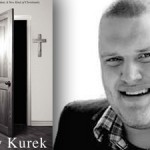I want to preface this post by saying that if this means nothing to you, then reject it. However, this means a great deal to me, so I’m posting it in case this might help some of you who read this blog. This is a continuation of my meditations on what I call the z-theory. If you wish to read further, type “z-theory” in my search box on the right column of my blog.
The bible itself testifies to the self-emptying of God, the “kenosis”, the sacrifice of his own transcendence (read Philippians 2). In a radical movement, God unfolds himself into the world which he loves. The incarnational event, the Christ story, not only reveals and relates this love of God, but actually demonstrates it as God entering into the world and the life of humanity. No longer, then, is God remotely enthroned on high, separated from his creation. Now, he is invested completely, compassionately incarnated into the actual life and history of humanity. The post-crucifixion God is no longer God the Father, for God the Father emptied himself, nor God the Son, for the Son, having completed the incarnational work, proclaimed, “It is finished!” The post-resurrection God then is the Spirit. Where we are gathered in love, there is God, but as Spirit. It is within the time and space of the cosmos, history, our human interactions, the God has condescended to live and move and have his being. It is within the affairs of people where God dwells, where God is found, where God is loved, and where God is served.











